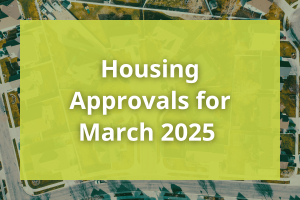The value of the work remaining in the housing pipeline has continued to decline. In the September quarter 2023 the value of new houses in the pipeline was $25.97 billion, a decline of 5.1% on the previous quarter and a year-on-year decline of 9.1%. Getting the number of houses under construction down (see elsewhere in this edition) is an important objective, but balancing demand over time is critical to maintaining stable industries, sectors and businesses.
The pipeline of work needs to be backfilled, with both a sustainable quantity and a suitable quality of work to support a supply chain that has been under pressures of different types for nearly four years.
As the number of houses under construction starts to decline, and with housing approvals at decadal lows, it is unsurprising the value of work in the housing construction pipeline is also deteriorating.
For most of the forestry and wood products industry and supply chain, this is especially significant because house framing, bracing and flooring (as examples) are relatively early in the building process. As the value continues to wash through, much of the industry’s work has already been done. Anecdotally, for some sectors and in some regions, the needs are relatively urgent.

This is no easy task as more detailed analysis of the data demonstrates the challenge of getting the backlog of construction under control. For the most part, work in the pipeline reflects two categories of activity:
- Work not yet done – these are dwellings which have commenced and reflects the remaining amount of work needed to be done to complete the project;
- Work not yet commenced – these are dwellings which have been approved, but for which work has not yet commenced.
For this analysis, we can set aside work that has to be re-done.
Examining the composition of work in the pipeline, we observe a logical connection between the decline in work not yet done, and the increase in completion rates discussed earlier. Work not yet done has declined from a peak in the December quarter of 2022 of $23.97 billion, to $20.89 billion in the September quarter of 2023.

However, the surprise is that the decline in work not yet done is being offset to some extent by the value of work not yet commenced, which actually increased in the quarter, to $5.08 billion up 19.9% on the previous quarter.

The long-term data informs us that approvals and commencements generally have a strong positive relationship. Looking at the year-end data, that would appear to remain the case. In fact, the smaller percentage decline in commencements in respect to approvals could indicate the housing industry is starting, slowly, to get on top of the backlog.
Houses
| Approvals | Year-end | Commencements | Year-end |
| Aug 2021 | 153,133 | Sep 2021 | 149,604 |
| Nov 2023 | 101,086 | Sep 2023 | 103,707 |
| % change | -33.9% | -30.6% |
However, there still appears to be a lag in the system of building work, in respect to commencements.

If we drill down into houses not yet commenced by number it can be seen that the trend prior to the pandemic was declining (That is, there was a tighter relationship between commencements and capacity, represented by the completion rate.
By comparison, from March 2020, the trend in the number of houses yet to be commenced is moving upward, running at some 3,000 units above the earlier period. At that time there was an explosion in housing approvals, with a similar response in commencements.
This can only be explained by an increasing lag between approvals and commencements, on a quarterly basis. The implication is that although approvals are currently in decline, the time taken to start new houses has lengthened. This is very likely the result of capacity being directed at completing the houses already under construction. The consequence is that the work not yet commenced has expanded.
It will require both these factors to improve for the number of houses under construction to come back to levels more in line with industry capacity. And that is the difficulty, because the resources needed to both commence and complete housing at the same time are the same trades, other labour and related services. Its hard to do two jobs at once!



